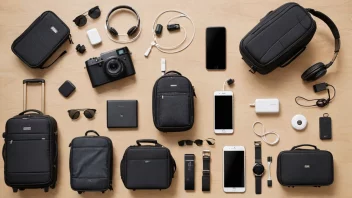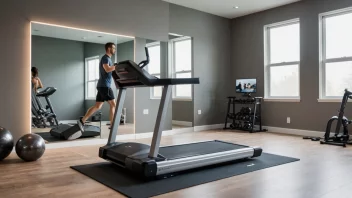Introduction
Headphones are an essential gadget for anyone who loves music, podcasts, or audiobooks. With a plethora of options available, choosing the right pair can be overwhelming. This guide will help you navigate through the different types of headphones, features to consider, and how to select the perfect fit for your lifestyle.
Step 1: Determine the Type of Headphones You Need
Headphones come in various styles, each designed for different use cases. Here are the main types:
- Over-ear headphones: Best for sound quality and comfort, ideal for home use or recording studios.
- On-ear headphones: More portable than over-ear, suitable for casual listening and commuting.
- In-ear headphones: Compact and lightweight, perfect for workouts and travel.
- True wireless earbuds: Completely wire-free, offering maximum convenience for active lifestyles.
Step 2: Identify Your Primary Use
Understanding how you plan to use your headphones will help narrow down your options. Consider the following scenarios:
- Daily Commuting: Look for lightweight, portable options with good noise isolation.
- Working Out: Choose sweat-resistant, secure-fitting earbuds that won’t fall out during exercise.
- Home Listening: Go for high-fidelity over-ear headphones for an immersive experience.
- Gaming: Opt for headphones with a built-in microphone and surround sound capabilities.
Step 3: Consider Sound Quality
Sound quality is crucial when selecting headphones. Here are a few factors to consider:
- Driver Size: Larger drivers typically produce better sound quality.
- Frequency Response: Ensure the headphones can reproduce a wide range of frequencies for balanced sound.
- Impedance: Lower impedance headphones require less power, making them ideal for portable devices.
Step 4: Look for Additional Features
Modern headphones often come packed with features that enhance the listening experience. Here are some to look out for:
- Active Noise Cancellation (ANC): Great for blocking out background noise, especially in busy environments.
- Bluetooth Connectivity: Wireless options are more convenient for on-the-go use.
- Touch Controls: Easy-to-use controls for adjusting volume and playback without reaching for your device.
- Battery Life: Check how long the headphones can operate on a single charge, especially for wireless models.
Step 5: Comfort and Fit
Comfort is key when choosing headphones, especially for long periods of use. Here’s what to keep in mind:
- Padding: Look for soft padding on ear cups and headbands for added comfort.
- Weight: Lighter headphones are generally more comfortable for extended use.
- Adjustability: Ensure that the headphones are adjustable for a secure fit.
Step 6: Set Your Budget
Headphones come at various price points. Determine how much you’re willing to spend. Typically, you can find good quality headphones ranging from $50 to $300. Remember that investing a bit more can often lead to better sound quality and durability.
Step 7: Read Reviews and Test Before You Buy
Before making a final decision, read reviews from other users to gauge the performance of the headphones you’re considering. If possible, try them out in-store to see how they feel and sound. Pay attention to:
- Sound quality in various environments
- Comfort during extended wear
- Ease of use for controls and connectivity
Conclusion
Choosing the right headphones involves understanding your needs and preferences. By following these steps—determining the type, identifying primary use, considering sound quality, looking for additional features, ensuring comfort, setting a budget, and testing before you buy—you'll be well-equipped to find the perfect pair that fits seamlessly into your lifestyle. Enjoy your listening experience!






